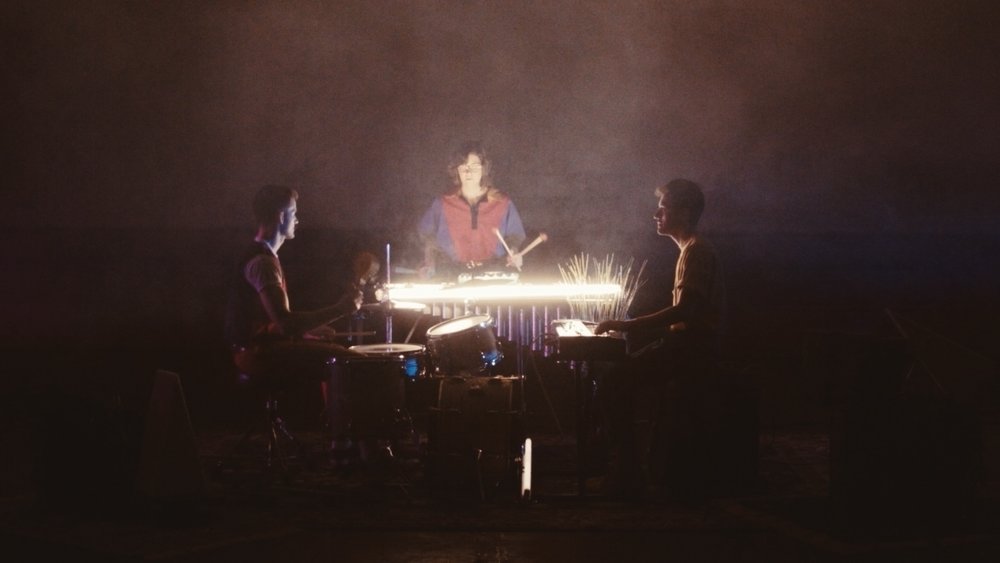by Jarrett Hoffman

After heading to the Eastman School of Music for their masters’ degrees, Matt Evans, Amy Garapic, and Carson Moody found themselves drawn six hours southeast — past Syracuse, Scranton, and Newark, through the Holland Tunnel, and over the Manhattan Bridge.
There, in Brooklyn, they set up a home base for their genre-fluid trio Tigue, whose influences include minimalism and indie rock. Now the group is hitting the road for a two-week tour — including a performance at the Bop Stop on Sunday, June 3 at 7:00 pm — to play music from their recent sophomore album, Strange Paradise. (Tickets are available online.)
Built around Evans’ synthesizer, Garapic’s vibraphone, and Moody’s drum set, the album explores long arcs and slow gradations of change in its 3 tracks over 41 minutes. As a comparison, Tigue’s first album, Peaks, comprised 8 tracks over 34 minutes.
“Our first record is these two massive chunks that are broken into shorter ideas,” Evans said during a recent phone call. “For this one, rather than chopping it into sections, we were interested in letting them all blur together into these long-form, kind of symphonic compositions.”
The first track, “Triangle,” gradually grew over the course of about two years. “We kept tagging things on and building, then working the transitions. So there’s a singularity in the world and the sensibility of the track, but with different pockets of information.”
Evans wrote the 21-minute “Quilts” in what he called a more typical composerly fashion. “Amy and Carson are both playing very similar sounds, and there’s this communication between them that’s really subtle, but allowed us to explore the rhythmic possibilities of non-melodic sounds. That came more out of a traditional neo-minimalist approach.”
Aside from the composition, differences in Strange Paradise can be traced to the recording studio. “For the first album, we went into the studio and recorded it almost live — more like a jazz or improvised session. We put some mics in a room, played through it, and that was pretty much it,” Evans said.
“For this one, we got to dig into our sound a lot more. We worked at a really cool studio in Pawtucket, Rhode Island called Machines with Magnets with our engineer, friend, and producer Seth Manchester, who has a really good ear for drums and for interesting sounds. We brought in more friends to collaborate with us, and there was a lot more play involved in that part of the process.”

Garapic was the first to head to Eastman, followed a year later by Evans, and the next year by Moody. “I think we were all excited to continue studying and to be at a place with an extremely high level all across the board.”
The artistic community of Brooklyn was a draw for all three of them. “We were already taking the drive down as often as possible. We were interested in the dialogue that was happening, and felt we could share our vision with this community and work within it.” The opportunity to work with and commission composers in the area was the cherry on top. “It seemed like a good place to cut our teeth, make things happen, and see what we could build.”
Speaking of the artistic community in New York City, I asked Evans about the trio’s past performance at the Noguchi Museum, where they “played amongst the sculptures” in a presentation by Bang on a Can.

Published on ClevelandClassical.com May 30, 2018.
Click here for a printable copy of this article



